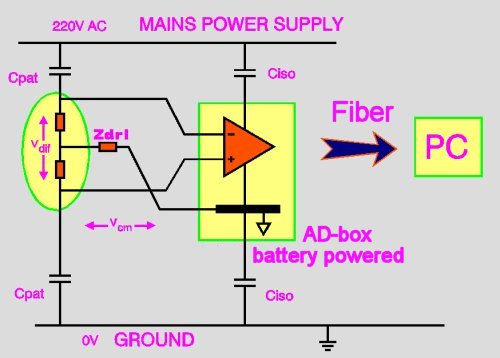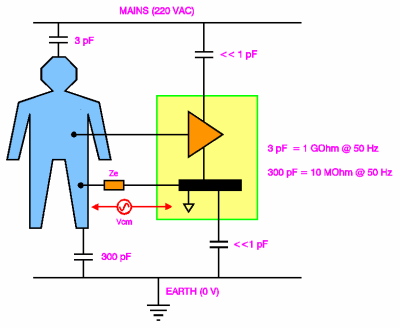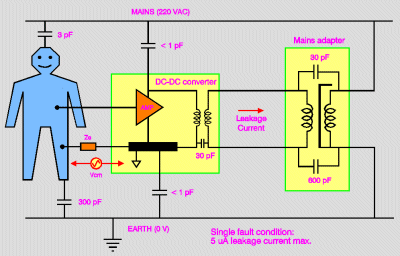 |
|
 |
|
 |
|
 |
|
 |
|
 |
|
| Why are battery power-supply, fiber data transfer and small front-end size so important ? |
| The combination of a battery-powered front-end and optical fiber offers minimal leakage currents in both normal operation an under fault conditions. During normal operation this assures the best possible rejection of all kinds of interference. Common mode as well as differential mode interference voltages are therefore reduced far below the amplifier noise level. Although high CMRR may solve the common mode problem in mains powered systems, the differential mode interference remains at least a factor of 10 worse than with our battery powered setup. An additional advantage of the battery powered setup is the very high protection for shock-hazard caused by the mains-supply. Because of the fiber optic data transfer, the safety situation is completely determined by the capacitance between the subject and the environment. Because the dimensions of the front-end are very small compared to the dimensions of the subject and because the front-end is located very close to the subject, the capacitance between the subject and the environment is not significantly increased by connecting the front-end to the subject. Therefore the biopotential measurement does not alter the situation in terms of protection against shock hazards and leakage currents are well below the IEC 601-1 CF specifications. |


